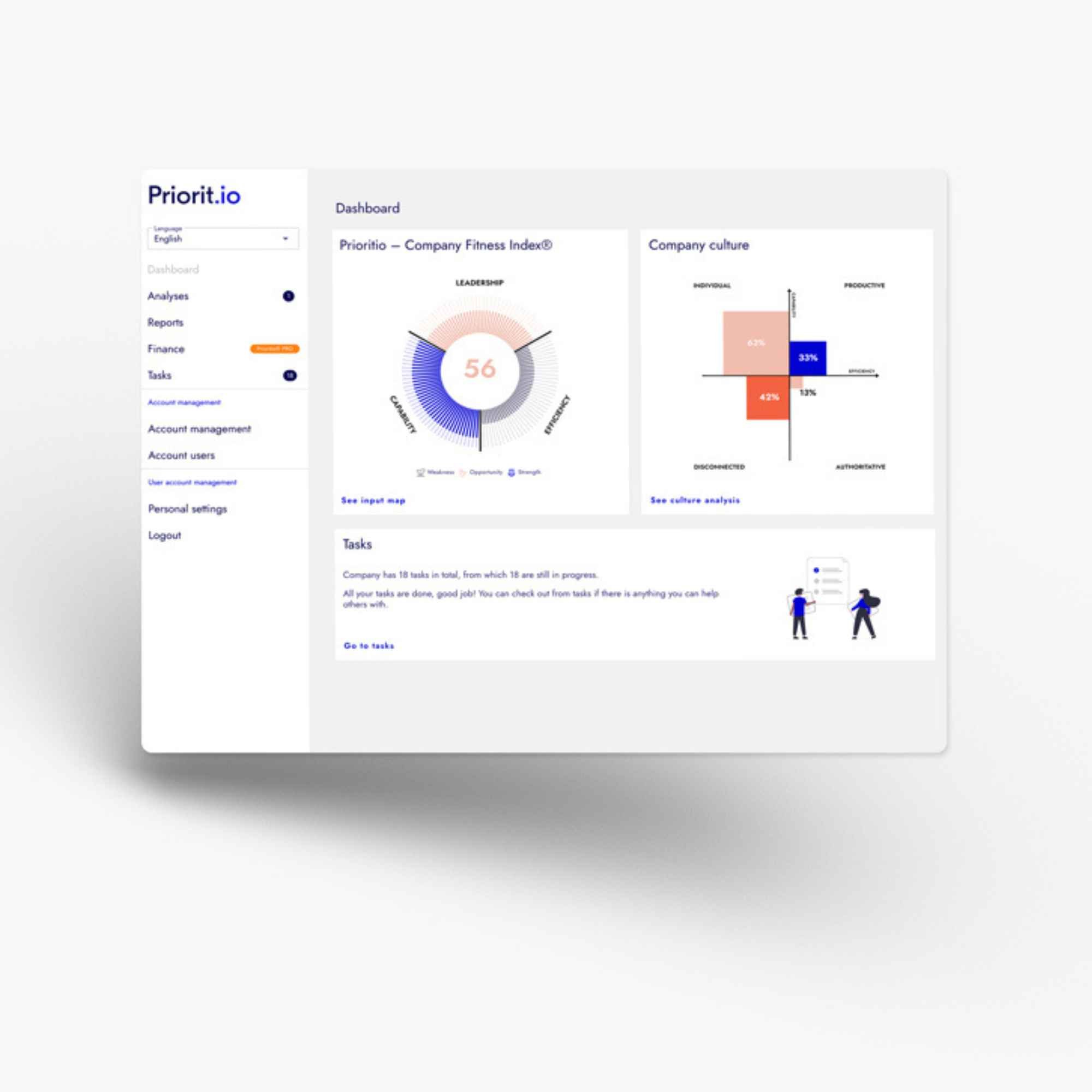If you want to get better at something, you have to learn to measure it first. In sports, it’s simple: in each sport, there are agreed measures to which you can compare your results. If you want to be the best, you know exactly the level of competition you’re standing against. But what if we are talking about something more abstract, such as leadership, efficiency, culture, or capability? Measuring such things in a comparable way isn’t that simple.
As the world becomes more data-driven, it's important for leaders to find ways to measure even more abstract things. Many leaders have only their “lagging indicators” such as revenue, profit, gross margin, and so on. There is nothing wrong in measuring these - on the contrary, they represent undeniable truth. But they also represent the past, the result of the work done 6-12-18 months ago.
Leading indicators are things that can be monitored now to see if the targets in the future will be achieved
Modern leader finds a way to measure “leading indicators” too. Leading indicators are things that can be monitored now to see if the targets in the future will be achieved or not, and what should be done now for sustainable success in the coming months and years.
The problem is that leading indicators are not that easy to find and without proper tools, they are also often inaccurate.
Find and set leading indicators
Start by identifying the key leading indicators that are most relevant to your organization's goals and objectives. For example, if your goal is to increase product/service quality, then capability, team motivation, and efficiency are potential leading indicators.
Once you have identified the key leading indicators, establish a process for tracking and monitoring them regularly. This can involve setting up regular reports or dashboards to help you stay on top of the metrics.
Analyze the data to identify patterns and trends. This will help you understand how your organization is performing against your goals and objectives and identify potential areas for improvement.
Use the insights from your analysis to take proactive actions. For example, if your leading indicators show that your team is struggling with motivation, you can implement a new bonus model or come out with a training program to help them become more skilled and more motivated as a result.
Measure the impact of your actions by monitoring the leading indicators over time. Learn whether your actions are having the desired effect and make adjustments as necessary.
Combine leading and lagging indicators into a strategic roadmap
A modern leader needs to learn how to combine lagging and leading indicators for one strategic roadmap. To constantly build a bridge between the past and the future. Lagging indicators reflect yesterday’s performance while leading indicators give insight into tomorrow.
Here are some steps you can take to combine lagging and leading indicators into your strategic roadmap:
- Define your strategic objectives. These should be specific, measurable, achievable, relevant, and time-bound (SMART).
- Identify your lagging indicators. Lagging indicators are metrics that reflect past performance, such as revenue growth, customer retention, and profit margins.
- Identify your leading indicators. Leading indicators are metrics that predict future performance, such as capability, efficiency, culture, and leadership.
- Prioritize your indicators based on their relevance to your strategic objectives. Some lagging or leading indicators may be more critical to your success than others.
- Set targets for each indicator based on your strategic objectives. Be ambitious but achievable.
- Create a dashboard. Share the dashboard with your team. This will help you track progress toward your strategic objectives and make informed decisions about future actions.
- Continuously monitor your indicators and adjust your strategic roadmap as needed. If you are not making progress toward your targets, you may need to adjust your tactics or revisit your strategic objectives.
The world has changed. The companies and leaders have to change too. So be the change and start building a bridge between the past and the future with leading and lagging indicators.



